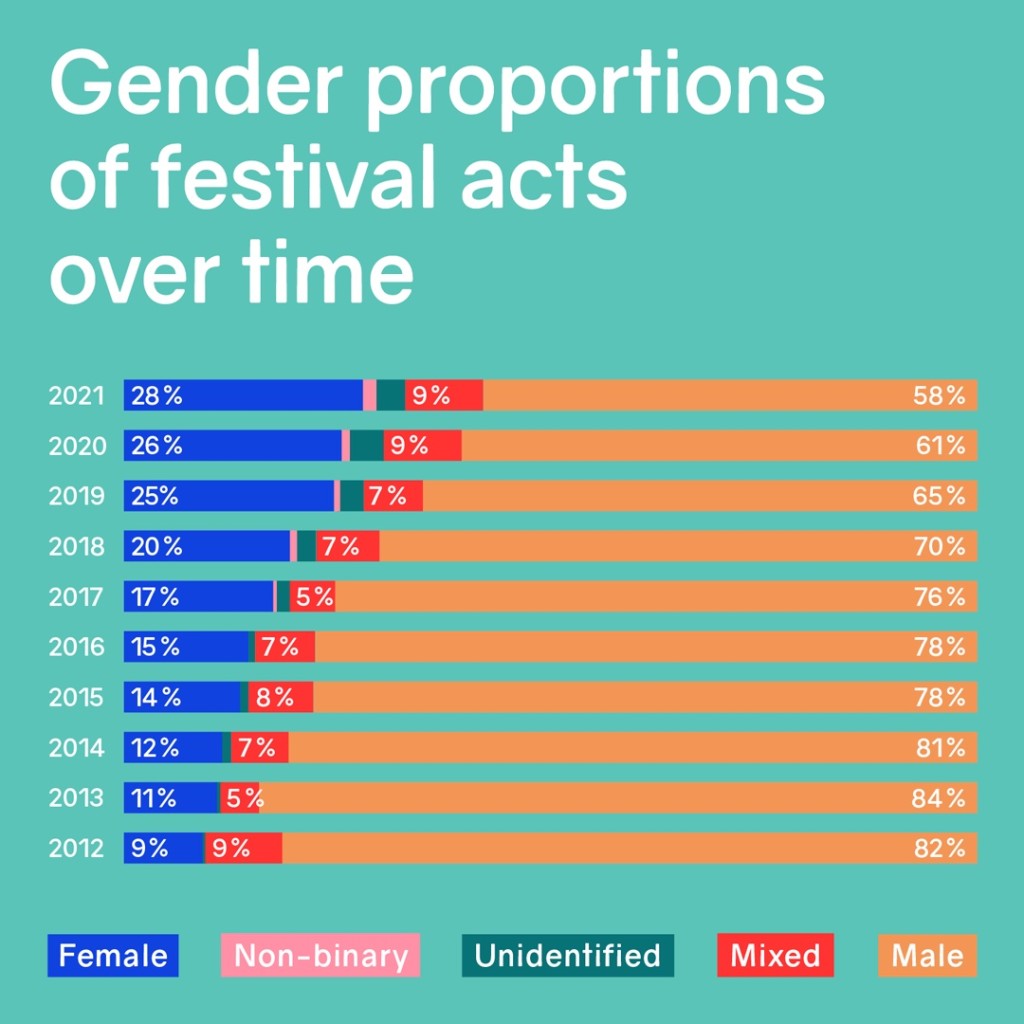female:pressure have posted their latest FACTS report. A decade of data and advocacy now shows measurable progress – while also illustrating more work to do, and a broader remit to tackle other forms of inequality.
Honestly, I don’t want to add too much here. The self-identified female:pressure “Trouble Makers” who worked on this report have done an exhaustive job. They’re transparent on methods, they’re always clear on what can and cannot be said with assurance about the data, and there’s just a ton of information to pour through. Heck, in this age of rapid-shared social media with no sources, I get a warm and fuzzy feeling from hard data and graphs. (Yeah, sure – nerd. And proud.)
https://femalepressure.wordpress.com/
I will echo some of what they highlight on their social media, though:

- Proportion of female bookings has risen (to 27% 2020-21, from 9% in 2012)
- Larger festivals tend to have lower proportions of female and non-binary bookings.
- Publicly-funded festivals and festivals with female artistic directors tend to have higher proportions of female acts.
The approach of FACTS, female:pressure, and frankly all of us I think is also evolving. It’s not enough to say “female” and not include non-binary and unidentified folks more explicitly. Some female:pressure organizers have told me one past that they thought men should also pursue mixed acts. I think collaboration is a delicate thing, so that has to be considered first, but yeah when it does work – go for it. And that also seems reflected in the numbers.
They also are increasingly focused on additional diversity and equality issues. Whether that should be in the survey is a deeply complex issue – and it’s worthwhile just reading through some of what folks are discussing there:
Additional issues of diversity
There are other questions, too, including slot hierarchy, and who’s in leadership roles. And more footnotes.
And finally ageism and ableism are getting more visibility, both in this survey and press. They link among others:
A Barrier to Being Seen: Ageism and Sexism Intersect on the Dance Floor
Concert Venues Assume Disabled People Are No Longer Music Fans
But if you read nothing else, read the calls – plural – to actions. They’re addressed at all of us, including artists, journalists, organizers, and even attendees. And if you don’t feel so motivated, read what some of the comments say about the significance of this to FLINTA + BIPOC + LGBTQIA+ artists. (If that’s an alphabet soup, happily, well, so is humanity. Often even internally messy on an individual basis so absolutely all of us counted as groups!)